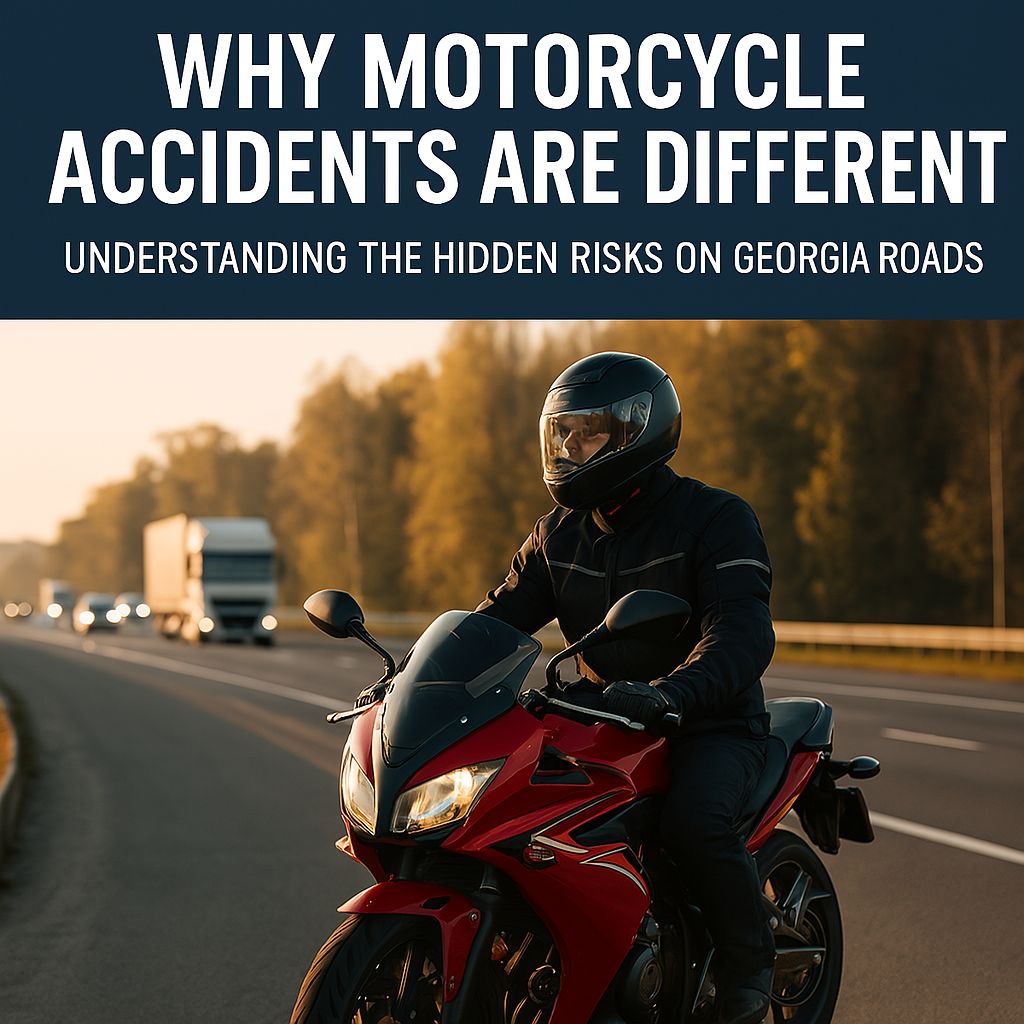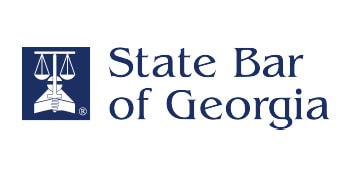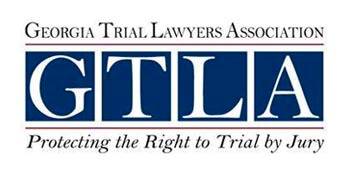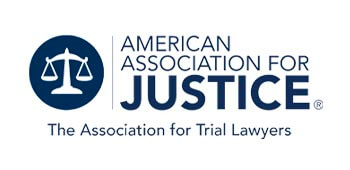Why Motorcycle Accidents Are Different: Understanding the Hidden Risks on Georgia Roads
Riding a motorcycle in Georgia is not like driving anything else. It is quicker in traffic, more exposed to the elements, and demands more from the rider—more awareness, more control, more trust. But while many ride with discipline, that does not mean others always see them or give them space to react.
At Prine Law Group, we have worked with motorcyclists across Macon and Middle Georgia who did everything right, yet still ended up in the emergency room. This guide outlines what makes motorcycle crashes different from car accidents, and why the law often struggles to catch up with the reality on the ground.
The Visibility Illusion: “I Never Saw the Motorcycle”
It is a line riders hear over and over again after a crash: “I didn’t see you.” That may be true, but it does not make the crash go away. Motorcycles are smaller, yes, but size is not the problem. The issue is how most drivers are trained to look for bigger shapes. Unless a rider is directly in view or moving in a way that draws attention, many drivers simply do not register that they are there.
That is not an excuse. It is negligence. Georgia law makes clear that failing to check mirrors or blind spots before merging or turning can make a driver legally responsible for the damage they cause.

Space Is Safety—and Riders Need More Than People Think
There is a misconception that motorcycles are nimble enough to fit through tight gaps safely. The reality is different. Riders are constantly adjusting for things most drivers do not even notice—gusts of wind, uneven paint lines, gravel patches that would barely register in a sedan.
These risks get worse when drivers:
- Hover too close in traffic
- Try to pass without changing lanes
- Assume a bike can “just move over”
- Cut back in before fully passing
Even without contact, these behaviors can force a rider into a dangerous correction. If that results in a crash, liability may fall squarely on the vehicle that caused the reaction.
Evasive Moves Are More Dangerous on Two Wheels
In a car, a sudden brake or swerve might rattle the driver. On a motorcycle, the same move can send the rider over the handlebars or into a guardrail. There is no steel cage to take the hit, no airbag to catch the body. It is gear, training, and luck.
A sharp lane change, an unexpected stop, or a missed signal from a car can leave a rider with no options. The law does not require a crash to happen to prove fault—only that the rider’s safety was put at risk by another driver’s decisions.
What Changes When a Passenger’s On Board
Carrying a passenger changes everything about the ride. It shifts the weight, stretches the braking time, and makes low-speed turns more sensitive. Drivers around motorcycles often do not think about this. They see the same profile and assume the same rules apply.
When a motorcycle carrying two people is forced to stop short or swerve, the chance of serious injury doubles. Spinal and head trauma are more likely, especially if one or both riders are not braced properly.
Everyday Driving Habits That Threaten Motorcyclists
Here is a breakdown of routine behaviors that create extra danger for riders:
| Driving Habit | Why It’s Dangerous for Riders |
|---|---|
| Failing to signal | Leaves riders no time to adjust or prepare |
| Rolling through stops | Creates confusion at intersections |
| Quick lane shifts | Can knock riders out of their path or into debris |
| Turning left into traffic | Top cause of fatal motorcycle collisions |
| Looking down at a phone | Takes away the few seconds needed to notice a bike |
What the Law Says About Motorcycles in Georgia
Under O.C.G.A. § 40-6-312, motorcycles are entitled to the full use of a lane. Drivers are not allowed to edge them out, share their lane without permission, or squeeze them into gutters. Georgia also bans lane splitting, so the road has to be shared fairly and predictably.
When a driver limits a rider’s space or forces them into an evasive move, that action may meet the legal standard for negligence. Repeated or aggressive behavior can also open the door to enhanced damages under certain conditions.
Why Motorcycle Injury Claims Follow a Different Path
Motorcycle cases involve four challenges most car crash claims do not:
- Injury severity – Protective gear helps, but injuries tend to be worse.
- Assumptions about riders – Some jurors and insurers believe riders take more risks, even when they do not.
- Equipment questions – Helmet condition and whether the rider wore protective gear often come up.
- Accident reconstruction – Figuring out how a bike crash happened takes more time, especially with uneven road surfaces.
At Prine Law Group, we work with crash investigators, doctors, and engineers to build cases that show what actually happened, not just what it looked like on paper.
Final Word: The Risk Isn’t the Bike—It’s Being Ignored
Most riders do not make careless moves. They ride alert, cautious, and aware of their limits. But that does not stop someone from pulling across an intersection without checking. It does not stop a car from drifting into their lane. And it does not stop an insurer from assuming the rider was at fault just because they were on a motorcycle.
Riding in Georgia is a choice, and it comes with risk. But the law protects riders when others make the road less safe. And we make sure that protection counts.
Hurt in a Motorcycle Crash in Georgia?
Do not guess what your case is worth. And do not trust the insurance company to tell you. At Prine Law Group, our motorcycle accident attorneys in Macon, GA understand the real risks riders face—and we build cases that reflect those risks.
📞 Call (478) 257-6333 or contact us online to set up a consultation. It is free. It is confidential. And it is focused on what you need to move forward.





